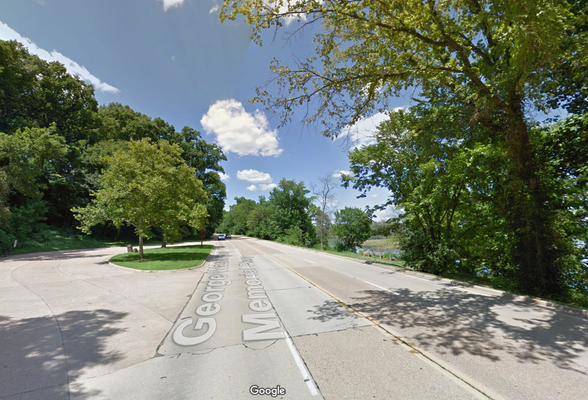About
The George Washington Memorial Parkway was one of the first high-speed roadways designed specifically for automobiles in the United States. It’s significant both as a beautiful piece of landscape architecture and a transportation engineering breakthrough: Its designers pioneered many of the transit principles that we take for granted, like highway medians, overpasses, exit ramps, safety flared intersections, and cloverleaf interchanges.
The initial stretch of the GW Parkway was built during the early 1930s as a New Deal-era work project (that’s the same year the first sections of the German Autobahn opened, as it were). Automobile ownership in the U.S. had skyrocketed over the preceding two decades, and drivers were clamoring for better roads. The largest streets at this point were urban avenues, and they were designed with horses and pedestrians in mind.
Outside the cities, road conditions were almost medieval; if you wanted to cross the country in the 1930’s you did it on dirt roads and cow trails. The Washington Post noted in 1930 that the Parkway’s planned route “will pass through a rugged countryside, most of which remains in a state of virgin beauty."
The GW Parkway was innovative in its status as a long-distance, high-speed, and automobile-only roadway. It was designed by the Bureau of Public Roads, a part of the Department of Agriculture (DOT was not established until 1966). The department built large architectural models to demonstrate some of the new features and sent them to the Capitol Rotunda to spark the interest of Congressional appropriators.
The word "parkway" is key to understanding the other side of this innovative project. The National Park Service describes the artistic element with this poetic description:
"A parkway is not intended to be just a road. Rather it is conceived as a linear strip of parklands encompassing a comprehensive spectrum of environmental and visual elements and principles, similar to the ingredients used by an artist to compose a good painting. Parkway designers use terrain, space, trees, shrubs, rock outcroppings, water features, natural edges, and the roadway itself as elements of their artistic palettes and combine them in a highly skilled manner to create expansive pictorial compositions . . . It is meant for comfortable driving in pleasant surroundings, not merely for getting from one place to another "
It's easy to think of the interstate highway system as laser-straight and devoid of scenery. Parkways are the opposite. Their meandering curves are optimized for beauty instead of speed. The GW Parkway surroundings were laid out with this in mind and enriched with oak, maple, poplar, beech, dogwood, hickory, walnut and sumac plantings.
In some places the side railings are a rustic wooden design, and in others you see more elaborate rough cut stone walls that are characteristic of 1930's public architecture. The parkway’s route was deliberately laid out to maximize long distance views of the Potomac and Washington skyline. There are numerous planned vistas, and pull offs with parks and picnic areas so pleasure drivers could enjoy the space.
Other than the proliferation of street signage in recent decades, the GW Parkway’s original aesthetic has been faithfully preserved into the present day.
Related Tags
Know Before You Go
You can enjoy the parkway by car, or by bicycle or on foot on the parallel Mount Vernon trail.
Published
December 23, 2016
Sources
- https://books.google.com/books?id=hU03AQAAMAAJ&pg=PA27&lpg=PA27&dq=%22A+parkway+is+not+intended+to+be+just+a+road.+Rather+it+is+conceived+as+a+linear+strip+of+parklands+encompassing+a+comprehensive+spectrum+of+environmental+and+visual+elements+and#v=onepage&q=%22A%20parkway%20is%20not%20intended%20to%20be%20just%20a%20road.%20Rather%20it%20is%20conceived%20as%20a%20linear%20strip%20of%20parklands%20encompassing%20a%20comprehensive%20spectrum%20of%20environmental%20and%20visual%20elements%20and&f=false
- http://blogs.weta.org/boundarystones/2015/03/11/origins-george-washington-memorial-parkway





































